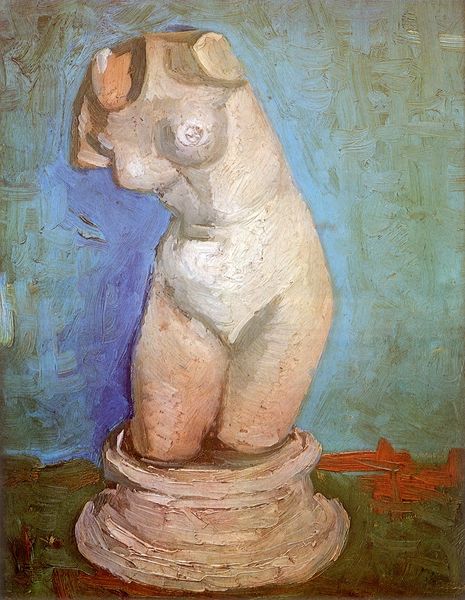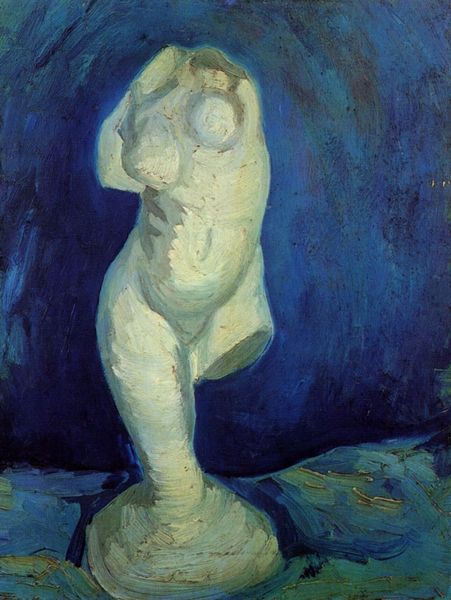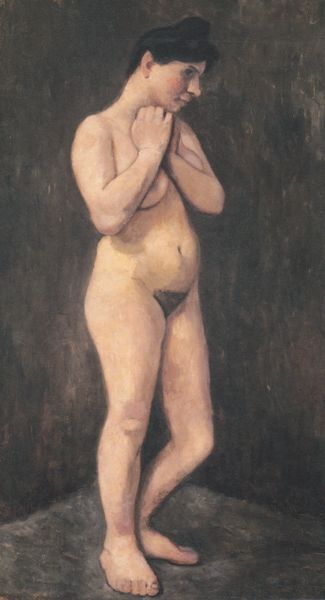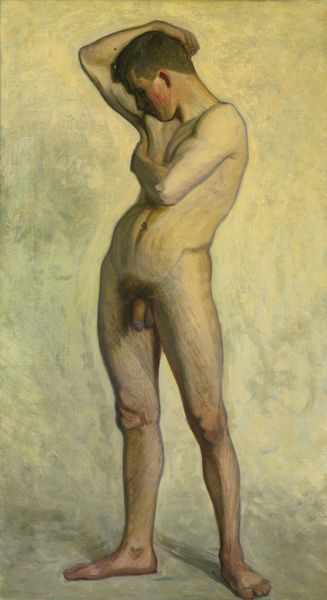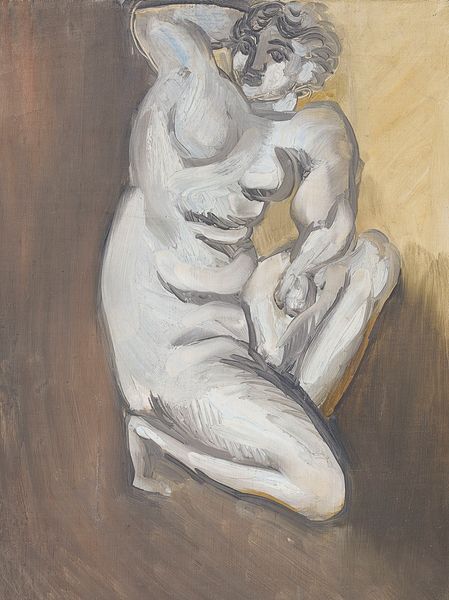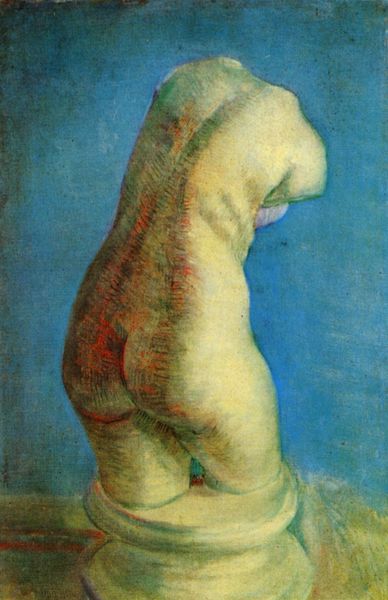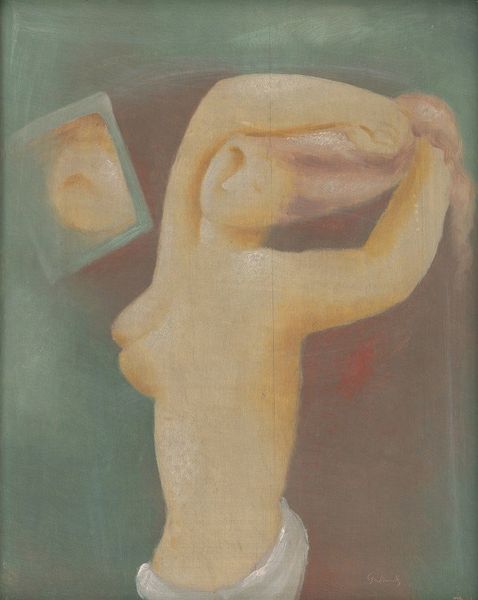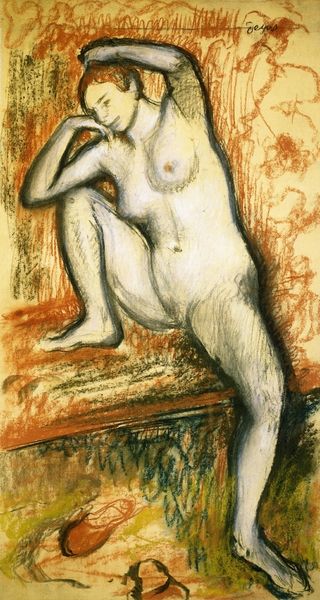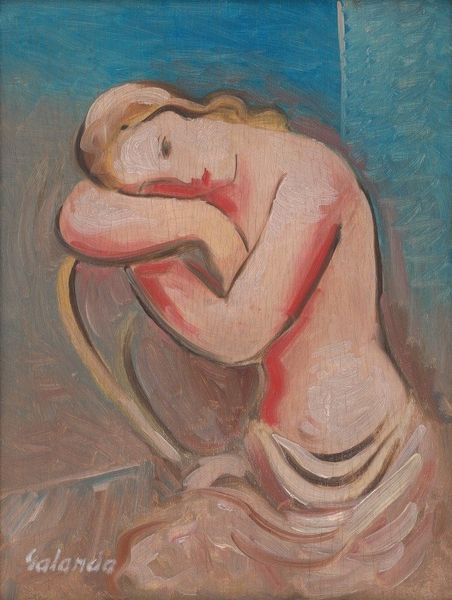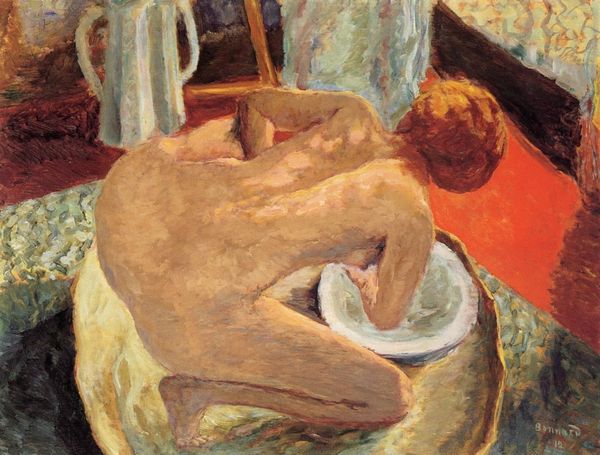
carving, oil-paint, impasto, sculpture
#
carving
#
oil-paint
#
figuration
#
oil painting
#
impasto
#
sculpture
#
post-impressionism
Copyright: Public domain
This Plaster Statuette of a Female Torso was painted by Vincent van Gogh sometime before 1890. Van Gogh captures the torso, a fragment of classical antiquity, with striking intensity. The incomplete statue, a body without a head or limbs, speaks of loss and survival, echoing ancient Greek ideals of beauty. Consider how the torso motif transcends time. We find similar forms in the Renaissance, imbued with a renewed appreciation for classical ideals. The Venus de Milo, headless yet iconic, embodies this enduring fascination. This fragment is not merely stone; it carries a cultural memory, a yearning for an idealized past. The statue is psychologically charged; it represents not just form, but also the fragility and enduring power of memory and beauty. The blue background heightens the statue, evoking a sense of melancholy and timelessness. The cyclical reappearance of classical forms throughout history underscores how past and present continually inform each other, each era reinterpreting and reimagining these ancient motifs.
Comments
No comments
Be the first to comment and join the conversation on the ultimate creative platform.

